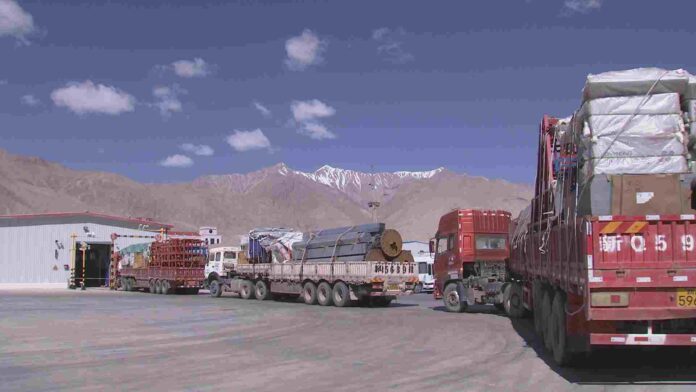ISLAMABAD: As the Chinese government has announced to open the border with Pakistan conditionally, despite an ease in Covid pandemic, the decision of opening the Khunjerab border has not facilitated two-way goods traffic.
Despite reported opening the border this month, no trade has practically been possible as the condition of contactless trade, imposed by China, has made it very difficult for importers and exporters to trade with Chinese businessmen on this route.
Ministry of Foreign Affairs, through a letter on April 13, had informed the relevant institutions including government of Gilgit Baltistan that Chinese authorities have conveyed that Pakistan-China border has been made operational w.e.f. 11th April 2022 for two-way goods traffic, with the proviso that the trade would be held on no contact basis i.e. cargo handlers from either side would not come into contact with each other.
As per the letter, the Chinese authorities have further conveyed that movement of passengers and tourists across the border will not be allowed from either side in view of the prevailing COVID-19 situation.
The ministry through the letter has asked relevant authorities to make due arrangements for opening of the border.
The Chinese side had imposed similar conditions for opening the border last year which could not yield the result for trade.
Under the condition, only Chinese cargo containers were allowed to leave goods near the border from where the same would be lifted by Pakistani importers.
As per a letter issued in April, 2021, the Chinese government had informed that their exporters would leave the goods on a specific location of Pakistan’s side of the border from where importers may receive them after following the SOPs.
Similarly, exporters would also leave their goods at the same location which buyers from China would receive after completion of the same process on their side of the border.
Personnel and the vehicles of both parties were directed to work in different time frames to avoid direct contact.
In this regard, loading and unloading, dropping and hanging up the trailer was to be done separately when the cargo inspection channel was opened.
However, these arrangements could also not work.
Following the Chinese decision to open the border this month, the Gilgit Baltistan Chamber of Commerce held a meeting on the border issues on Saturday in which the members showed their serious concerns that the conditional opening of the border would not facilitate bilateral trade.
Similar conditional opening of the border has already failed to operate the dry port in the past too. During the meeting, which was chaired by President of chamber Ashfaq Hussain, it was decided that one side trade would not be allowed under the stiff condition of bilateral trade.
“Over 3000 traders and importers are facing huge losses for closure of the border for over two years. Under the condition of contact-less trade, the local traders would not be able to trade with their Chinese counterparts,” a statement issued by the chamber after the meeting said.
The chamber has rejected the conditional opening of the border demanding that normal trade handling be allowed on the only land route of the two countries.
The chamber has also requested the Chinese side to allow those importers who have obtained ‘border passes’ to cross the border and enter at least into bordering Xinjiang province.
It may be mentioned here that China, after keeping the only land route closed for over two years following the outbreak of Covid-19 pandemic, had announced to open it from April 1, 2022 for trade activities.
According to a circular issued by Foreign Affairs office of Kashgar administration, Xinjiang Uygur Autonomous Region of China on March 24, 2022, the Hongqi Lafu port (Khunjerab dry port) would officially be opened in April.
“In accordance with the agreement between the government of Pakistan and China on border crossing and their management system signed on May 22, 2013, CMB Hongqi Lafu Suster port will officially be opened on April 1, 2022,” the circular said.
However, as per the circular all inspection units and foreign related enterprises were directed to make preparations in accordance with the port epidemic prevention and control requirements.























